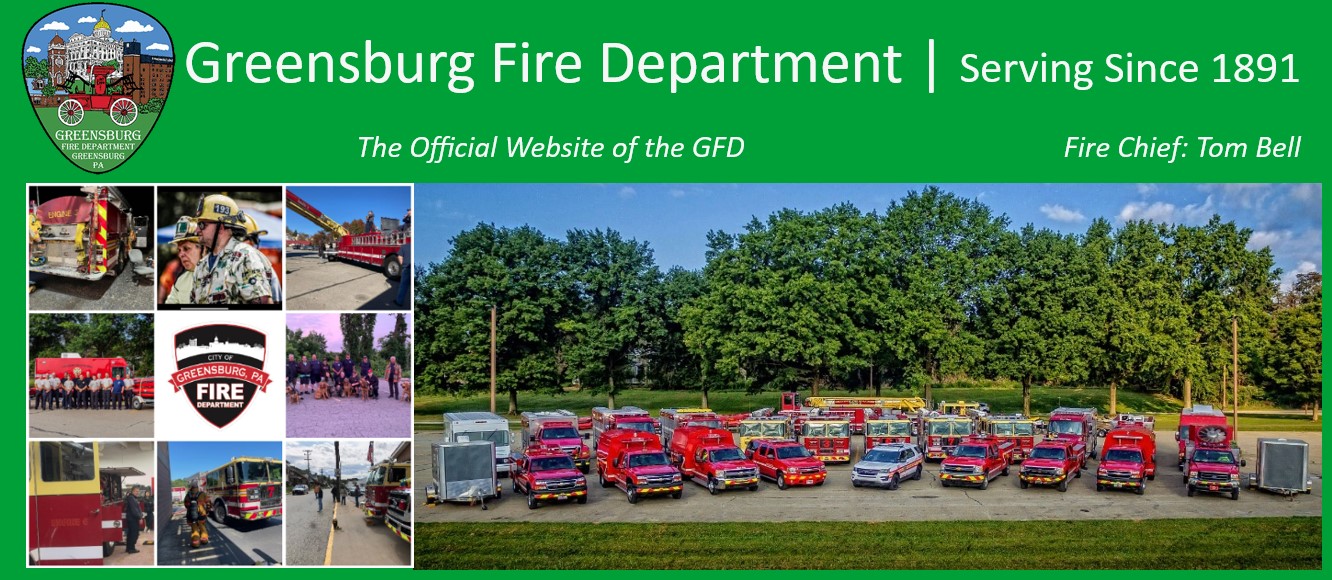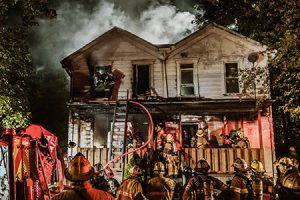GVFD History
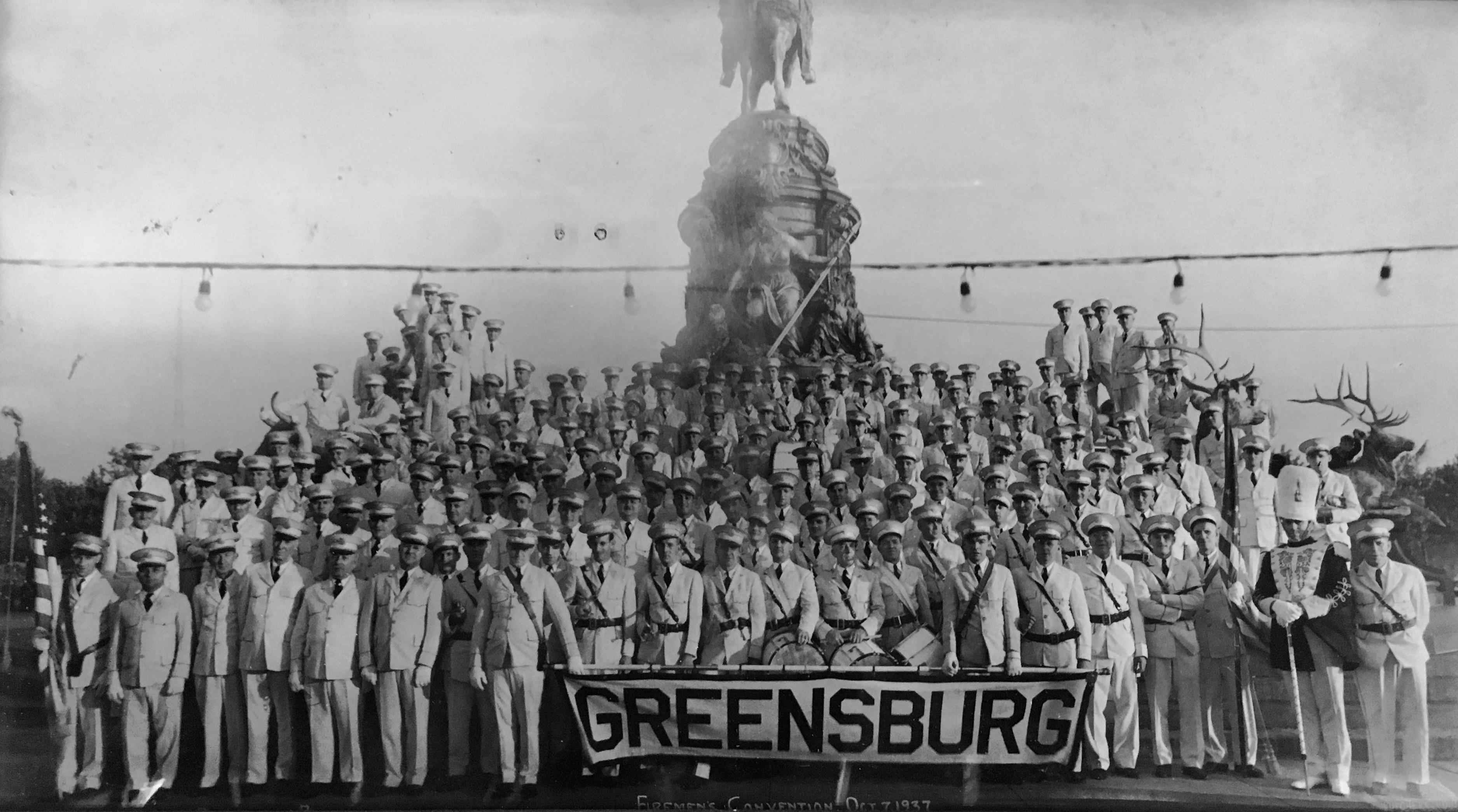
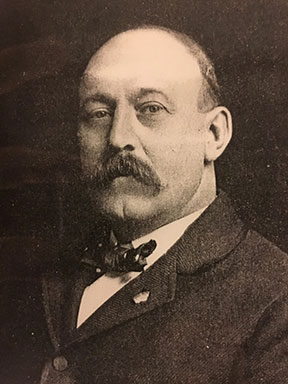
Chief
John F. Mitinger
1891-1894 and 1901-1908
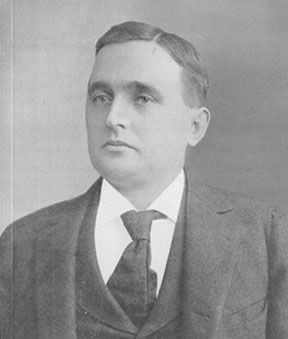
Chief
W. A. Griffith
1898-1900
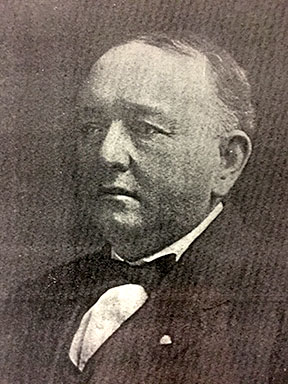
Chief
Oliver Long
1910-1916

Chief
William H. Blank
1919-1925
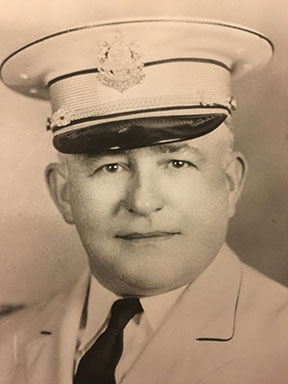
Chief
Albert J. Utz
1939-1943

Chief
J. Edward Hutchinson
1953-2016
It is possible that we will never really know just when the first fire company was organized in New Town (the first name given the site of present day Greensburg). We can be certain that there was at least a bucket brigade before city water was brought to town in 1890. Members of the Westmoreland County Historical Society discovered multiple letters and old newspaper articles from the Greensburg Gazette referencing firefighting type activities from the late 1700’s early 1800’s. There are numerous newspaper accounts that prove there was a fire company operating in the borough before the purchase of the “Pat Lyon” and “Goodwill” engines from the city of Pittsburgh in mid 1800’s (both of these engines have been fully restored and are on display in the Greensburg Fire Department museum).
On the evening of January 12, 1891, a group of about twenty men met in the Borough Building on North Main Street and formed a preliminary organization, which developed into what is now the Greensburg Volunteer Fire Department (GVFD). They decided to form two hose companies. Company No.1 would have members from the First, Second, and Third Wards, and Company No.2 members would be from the Fourth Ward. The four-wheeled wagon, which the borough already owned, was given to Company No.1, along with 300 feet of rubber hose, and it was kept on the street floor of the Borough Building. A new two-wheeled cart and 300 feet of hose were bought for use by Company No.2, and it was kept in a small building on Mill Street, which is now Westminster Avenue.
On January 14,1891, two days after the first meeting, a second meeting was held. At this meeting four members from each company were appointed to raise funds for equipping the companies. E.A. Erwin, a local merchant, formed a committee to raise funds from the community to buy the first rubber uniforms for the members. A committee was also appointed to recommend a man for Fire Chief. The name of John F. Mitinger was presented to the two companies, and he was elected as the first Fire Chief of Greensburg. As Greensburg grew in area and population there was a need to form more fire companies. Hose Company No. 3 was organized on July 6, 1894; Hose Company No. 6 on July 20, 1896; Hose Company No. 7 on October 10, 1905; and Hose Company No. 8 on January 23, 1906.
Hose Company No. 1 is one of the two original companies formed under the Greensburg Volunteer Fire Department. In the spring of 1893, Fire Company No.1 moved from the town hall to a building on West Otterman Street. The Borough of Greensburg, in 1918 purchased a Seagrave pumper that was housed in the Coshey’s Livery Stable. This truck was chain driven, had solid rubber tires, and had a pumping capacity of 1000 gallons. In 1922, Fire Company No. 1 and 2 moved into the Central Fire Station on Pennsylvania Avenue. Fire Company No. 1 remained there until they moved to their present location on McLaughlin Drive in 1967. Fire Company No. 2 remains in the Central Fire Station today. The city replaced the 1918 Seagrave with an American La France in 1941 followed with a Peter Pirsch in 1958. This in turn was followed by a 1974 fifty-foot Telesquirt Seagrave pumper and in 1999 with its current Seagrave pumper. Currently, Fire Company No. 1 houses a 1999 Seagrave pumper, a 2005 Custom Kenco Rescue Vehicle, a 2008 Custom Chevrolet utility vehicle, and the Department’s 1991 Chevrolet panel van that has been converted into our Dive Team’s truck. For many years, Station 1 also housed Westmoreland County Hazardous Materials Team’s (Team 800) Rescue truck. Aside from being the foundation of the Greensburg Volunteer Fire Department, Hose Company No. 1 also has the proud honor of having one of its members becoming the Pennsylvania Fire Commissioner. Member Jack Simon was appointed to the position by Governor Robert Casey on January 16, 1990 Mr. Simon held the office until April 30, 1995. Long time friend Robert Rhody said of Simon, “While commissioner, he completely reorganized the educational structure of firefighting in the state and incurred the wrath of thousands of firefighters who liked the old ways of doing things.”
Truck Company No. 2 is the second of the two original companies formed under the Greensburg Volunteer Fire Department. In July of 1891, the new fire department was invited to the State Convention held in Lock Haven. Nineteen members left the city by train on September 15 and returned on September 18 with much plaudits of “well done.” The Greensburg Volunteer Fire Department has attended every State Convention since this time. In April 1894, Company No. 2 moved to South Main Street to a two-story building known as the Francis Building. During this time the Company acquired a 4-wheel ladder truck, in addition to, the two-wheel hose cart. The men used streetcars and Henry Coulter’s car to pull the equipment to alarms.
In February 1905, the Company manned the new 65 foot aerial purchased by the city and housed at the Old St. Clair Theatre. J.K. Long who was president of the Company supplied the horses to pull the cart. In December of 1914, the Company had raised over $1700.00 to purchase a motorized piece of equipment. In July 1915, they took delivery of a Lang Truck which was the first motorized fire apparatus in the city. In 1922, a site was chosen on Pennsylvania Avenue and construction was begun on what was to be known as Central Fire Station. It was occupied by the two Companies and on January 8, 1923 was opened with a public reception. In 1927, council purchased a Seagrave Quadruple combination fire truck equipped with hose bed, ladders, a 750-gallon per minute pump and booster tank. In 1950, council purchased a Seagrave 85 foot tractor drawn aerial ladder truck that served the city well. The tractor drawn aspect immediately caught favor in its ability to negotiate streets and allow easy placement at the fire scene. In 1970, council purchased a 100-foot tractor drawn diesel aerial. This was the first diesel fire truck in the city. In 1992, this aerial would no longer pass inspection so the city purchased a 1988 Pierce 105’ tractor drawn ladder truck from the City of Pittsburgh for $225,000. This truck remained in service until the current 2013 Smeal Tractor Drawn 4-section 100’ steel aerial ladder was purchased. The price tag for this vehicle was nearly one million dollars. Beside the aerial, Fire Company No. 2 presently houses a 2003 Kenco custom Ford High Expansion Foam Machine, a 2011 custom Kenco Air Truck, and a 2006 Custom Chevrolet utility vehicle. For many years Station 2 also housed the boats that are used by the departments Dive Team. Company No. 2 has always been active at the fire scene. They have been counted on many times and have always been able to produce and provide the manpower needed.
Hose Company No. 3, first known as the “Bunker Hill Hose Company” was organized on July 6, 1894, with 26 charter members. During these early years before the original hose house was constructed, the company meetings were held at the “Bunker Hill School House.” The original house was opened December 12, 1895 with a large reception and dinner. Construction of the building was at a full worth of $5,000, not to include the equipment and furnishing which summed up over $16,000. This included two fire trucks and other fire fighting equipment. The present Company location is at the corner of Grove and Alexander Avenues in Greensburg, and this facility was dedicated in May 1954. The Pat Lyon Fire engine was purchased from the Pittsburgh Fire Department. This was the first engine west of the Allegheny Mountains. In 1924, the company’s first motorized fire engine was purchased, a Packard Fire Engine. It was later replaced by varying Seagrave Fire apparatuses in 1932, 1949, 1963, and 1978. The present Seagrave Fire Engine was placed in to service in 2002. In 1985, one of the most innovative trucks in the area was housed at Company 3. This truck was a 1986 rescue/light truck, which was credited with the most up-to-date rescue and extraction equipment, including Hurst and Homatro tools, and the largest most powerful air bags in the state. Currently, Hose Company No. 3 houses a 2002 Seagrave pumper, a 1994 Custom Kenco Rescue Vehicle, and a 2006 Custom Chevrolet utility vehicle. Four men from Company No. 3 have served as Chief of the Greensburg Fire Department. These are William A. Griffith, Oliver P. Long, Oscar F. Myers, and most notably John Edward Hutchinson. The members of Hose Company No. 3 are proud to have had Amos K. Hutchinson as a member. Amos was active in his company and throughout the Commonwealth with his interest in legislature with for the firemen. As an active fireman and state representative of the 57th district he introduced several bills during his terms as legislator.
Hose Company No. 6 began on July 20, 1896, when a group of men who resided in Ludwick Borough met to form a volunteer fire company to protect the lives and property of the citizens in their community. On October 19, 1897, Ludwick Hose Company No. 1 took delivery of two hose carts, one having five and one half foot bicycle wheels and the other, five-foot wooden wheels. The total cost for both was $753.07. On January 4,1906, The Ludwick Fire Company elected to become a part of the Greensburg Fire Department. That same year Ludwick Borough merged with the City of Greensburg. The company continued to respond to alarms with the hose carts until 1916, when the city purchased a four-cylinder Oldsmobile chemical truck. In 1924, the city purchased a new 750-gallon per minute Seagrave pumper to better meet the needs of the growing city. In 1954, Hose Company No. 6 borrowed funds from the Relief Association to purchase the house and lot at the corner of West Otterman and Depot Streets. The house was torn down, the well filled, and the land was given to the city to construct a new house. The new hose house was built and a new 1000-gallon per minute pumper, also a Seagrave of the open cab type, was purchased. In 1957, the Westmoreland County Civil Defense Agency Truck was stationed at No. 6 and served for many years in that capacity. By the late 1960’s, it became a Heavy Rescue serving at all sorts of accidents, floods, tornadoes, and other disasters both natural and man-made. In 1982, Rescue 800, a Hazardous Materials Unit, replaced it. In 1971 the city decided that the 1954 Seagrave had reached the end of its span as a front line engine and a 1971, Seagrave 1000 gallon per minute pumper was purchased, with Hose Company No. 6 providing $7500.00 to furnish it with a 55 foot articulating boom Squirt. Currently, Hose Company No. 6 houses a 1997 Seagrave pumper and a 2011 Custom Chevrolet 2500 utility vehicle.
Seventh Ward Hose Company, known as Hose Company No. 7 was organized on October 10, 1905. This was about three and one-half months after the Boroughs of East Greensburg and Greensburg voted to consolidate. The No. 7 Hose Company meetings were first held in a small frame building used by the East Greensburg Borough before annexation to Greensburg. In 1910, a new two-story brick building of modern type was erected. In 1933, as the result of much endeavor and persuasion a new brick building was built on a lot obtained from the Greensburg School Board. This new lot was acquired in exchange for the old fire station lot. In 1991 the current home of Hose Company No. 7 was constructed. The first fire fighting apparatus equipment was a two-wheel hand-drawn hose cart pulled by members to the fire calls. There is no mention in the minutes as to where or when the hose cart was obtained. This cart was used on some big fires such as the Huey Apartments and Westmoreland Grocery Company. In 1915, No. 7 purchased a Pope-Hartford chassis from the Rose brothers. Members contributed and worked remodeling the truck into a usable fire truck that was the envy of all. This truck served until 1926 when council purchased a Seagrave pumper with chemical attachments and booster. In August 1949 and again in January 1965, the city purchased a new 1000-gallon Seagrave pumper for the company. In 1991 and again in 2016, the City purchased a 1250-gallon Seagrave pumper to be housed at Hose Company No. 7. Over the years Hose Company No. 7 has operated various fire pumpers, but in the early 1970’s they started a new trend by having a specialized apparatus designed to respond to vehicle accidents. In 1972, members constructed an International Rescue truck with crew cab and light tower. This vehicle was one of the first of its kind to carry hydraulic rescue tools (also know as the “Jaws of Life”). Currently, Hose Company No. 7 houses a 2016 Seagrave pumper, a 2005 Custom Sabre Rescue Vehicle, and a 2014 Custom Chevrolet utility vehicle. Through the years many of the members have come up through the ranks and served the Greensburg Volunteer Fire Department. Hose Company No.7 has had two chiefs over the years: Joseph Rush 1944 – 1952 and Tom Bell 2016 – current. No. 7’s men and women take great pride in being able to serve their country, their company, the department, and the city of Greensburg. Many of the past and present members of Hose Company No.7 are known for giving unselfishly of labor and time to help make the Greensburg Volunteer Fire Department what it is today.

Chief
William Huff
1895-1897

Chief
John Barclay
1904-1909
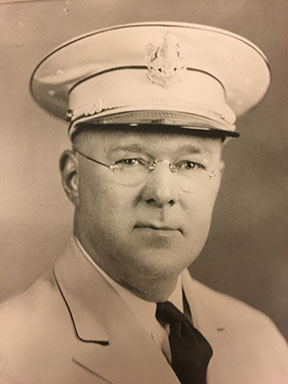
Chief
Oscar F. Myers
1916-1923 and 1929-1937
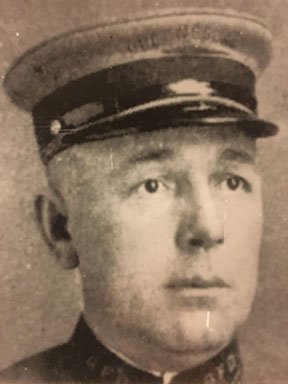
Chief
Cyrus D. Hoffer
1926-1928
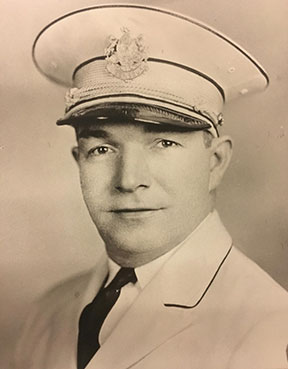
Chief
Joseph Rush
1944-1952
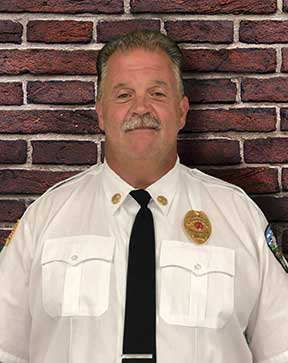
Chief
Thomas M. Bell
2016-Present
They called it Paradise – a place of happiness – this was the community where most of the men who formed the nucleus of Greensburg Hose Company No. 8 resided. The date was January 23, 1906 when “Greensburg Hose Company No. 8” was named. In 1906, fire fighting equipment operated by the company started with a two wheel hose cart, 300 feet of two and one half inch hose, two nozzles, a plug wrench, crow bar and a fire axe. This cart was pulled by the members, but if a streetcar happened to be going in the direction of the fire, the cart was attached to it. The second piece of equipment was a chemical engine put in service on September 26, 1916. Horses were borrowed from residents to pull this engine. The third piece of equipment was a Peerless Touring car purchased from the superintendent of the Jamison mines. The truck was officially turned over at the September 15, 1921 meeting and the hose cart and chemical engine retired. The next truck was a 1926 Seagrave equipped with ladders and a hose bed. This was an exciting piece of equipment due to the mechanical brakes. It was always a question of where it was going to stop. This truck continued in use until 1949. In 1935, a Dodge bus chassis was purchased to be made into a salvage truck. In 1949 a Seagrave Quadriple Combination Pumper was put into service. This truck was to combine both the pumper and salvage into one vehicle. This truck was extremely heavy and overloaded so when Hose Company No. 1 received a new truck, their 1250-gallon American La France pumper came to No. 8 to replace the salvage. This vehicle was then replaced in 1981 by a GMC van. The years 1965 and 1978 saw new Seagrave 1000-gallon pumpers. In 2004, a new 1250-gallon Seagrave pumper was delivered to Hose Company No. 8. In 1983, a water salvage truck was placed into service. This truck, a 1976 Dodge van, was a carpet cleaning truck. The cleaning portion was removed leaving the pump. In 1987 it was replaced by GMC van. Hose Company No. 8 was without permanent quarters until 1908 when the borough purchased a building on Highland Avenue. Ground was broken in August 1930, and on February 9, 1931 Greensburg City Council formally turned the new hose house over to the company. The company moved into its new home on February 26, 1931. An addition was added in 1985 to house the water salvage. Currently, Hose Company No. 8 houses a 2004 Seagrave pumper, a 2012 custom Ford Salvage Vehicle, a 2006 custom Chevrolet utility vehicle, and a 2007 and 2010 water salvage trailers that were assembled by Pemberton’s Professional Chemicals of Pittsburgh. Hose Company No.8 has always been one of the first to adapt to changes in methods and service to the community.
Over the years, the following men have served as Fire Chief for the Greensburg Volunteer Fire Department: John F. Mitinger, William Huff, W.A. Griffith, John Barclay, Sr. Oliver Long, Oscar F. Myers, William H. Blank, Cyrus D. Hoffer, Albert J. Utz, Joseph Rush, J Edward Hutchinson and current Chief Tom Bell. These men have all done great things for the department, but none had a greater impact than Ed Hutchinson. “Hutch” was sworn into office in January 1953 and on September 26, 1964 he was awarded the first ever “Pennsylvania Fireman Of The Year” award.
During his 63 years of service, he developed many new programs and initiatives for the department: High Ex Foam Truck, the Bloodhound Team, the Scuba Dive Team, Rope and Confined Space rescue teams, and the first Hurst hydraulic vehicle rescue tools. Hutch has also been instrumental in many community projects such as the Aerobic Center, Air Rescue East helicopter service, Mutual Aid ambulance service, the fitness center at Greensburg Salem High School and sports fields and various pavilions throughout Greensburg. One of his countless accomplishments was leading a team of GVFD firefighters to help successfully rescue nine miners miraculously found alive after the Quecreek mine collapsed in 2002. He was also the first and only fire chief to make international news with his “Dancing Bears” physical fitness program he initiated for his firefighters. These programs are merely the highlights of his great career. At 95 years old, Chief J. Edward Hutchinson made every call until his last day in office, November 14, 2016.
The Scuba (Dive) Team team was the creation of Chief Ed Hutchinson in 1958. Originally formed as a body recovery unit, the team’s value in performing a myriad of underwater jobs became evident later as the team grew and developed. In order to find a replacement for “dragging,” it was necessary to get firemen interested in “skin-diving.” The team started with a core of 10 candidates who received the best training available at the time. Since its formation, the Greensburg Volunteer Fire Department Dive Team has logged over 1,000 recoveries including drowning victims, vehicles, stolen property, weapons, and miscellaneous items. The equipment this team employs is stored at the “Boat House” located behind Station No. 4. Some of the more notable equipment is: a 21’Aluminum Sea Arch boat with Marine Sonic Side Scan Sonar, 6 Achilles inflatable boats trailered in tandem each with there own prop drive motor, 2 Wave Runners, and enough wet, dry and ice suits with wireless communication to equip eight divers at a time. This merely scratches the surface of the multitude of equipment this team possesses. The GVFD Dive Team has traveled all over the United States performing various missions and prides itself in keeping abreast of constantly changing equipment, developments, and technology.
The second of our specialized ancillary teams is our Bloodhound Team. The Bloodhound Team was an innovation of Chief Ed Hutchinson with the idea that a bloodhound could replace manpower in the event of a search. He had read articles that indicated that a bloodhound could locate a lost person more quickly and with much less manpower and cost. His idea materialized on February, 1969. He discussed his idea with Dale Eicher, a fireman from Truck Company #2, to establish a need and merit for such a team. At this point, they didn’t even know where to purchase a hound. What started with twelve volunteer firemen and two dogs, has grown to over twenty-five volunteer firefighters with seven active bloodhounds. Today, 48 years after the founding of the team, the responsibility of the team has been placed with Lou Battistella, who has served as the Team Captain for over 15 years. The Bloodhound Team has succeeded in becoming experts in people trailing. The search assists have been dedicated to locating missing children, missing persons of institutions, nursing homes, senior care living facilities, Alzheimer patients, and finding robbery suspects. We hope the team will continue for many years to come. Currently, the Greensburg Bloodhound Team responds to approximately 25 to 35 calls per year. All this is done by a scent discriminating bloodhound and a dedicated volunteer.
Greensburg Station No. 4 (GVFD Museum) was started in 1969 by dedicated members of the department wishing to keep alive the history and maintaining artifacts and antique fire department equipment. The museum has had two temporary homes before moving into current location in the 1998 behind City Hall in the 4th Ward. The museum has hundreds of artifacts on display, but none make the members prouder than its three fully restored fire engines. The first is an 1805 Pat Lyon. The Pat Lyon was retired from the Pittsburgh Fire Department after the great fire of 1845. It was sold to the Pat Lyon Hose Company in Greensburg and was used until approximately 1876. In December 1998, the engine was loaded on a flatbed truck and was delivered to the Weavertown Coach Works where the Amish workmen meticulously restored it to its present, pristine state. The second would be an 1825 Goodwill. In 1825, the Goodwill Fire Engine was built by the employees of Old Allegheny Borough now known as the Northside of Pittsburgh. Both the Goodwill and the Pat Lyon were used by the Pittsburgh Volunteer Fire Department and were used to fight the Great Fire of April 5, 1845. The final engine is a 1949 Seagrave that ran out of GVFD Hose Company No. 3. This truck served in many capacities around Westmoreland County over the years and came back to the fire department in the early 1980s. In the early part of this century, the truck was sent to the State Correctional Institution in Erie County to help restore the engine. The truck returned from the prison to Greensburg in 2005. The total restoration cost just over $35,000 and they tried to keep everything as original as it was the day it was received it from Seagrave in 1949. The museum is operated by a committee comprised of firefighters from each company of the GVFD and other interested members of the community.
The reach of the GVFD extends far beyond the Greensburg city limits, we’ve built playgrounds in Selma, Alabama for under privileged children, provided relief in Charleston, South Carolina to the victims of Hurricane Hugo, and were on the banks of the Hudson River when Hutch got the call there were no survivors to recover from the collapse of the North and South Towers of the World Trade Center. The mission is now and has always been to provide the highest level of public safety services, fire prevention education, and enhance community development for all residents and visitors of the City of Greensburg.
